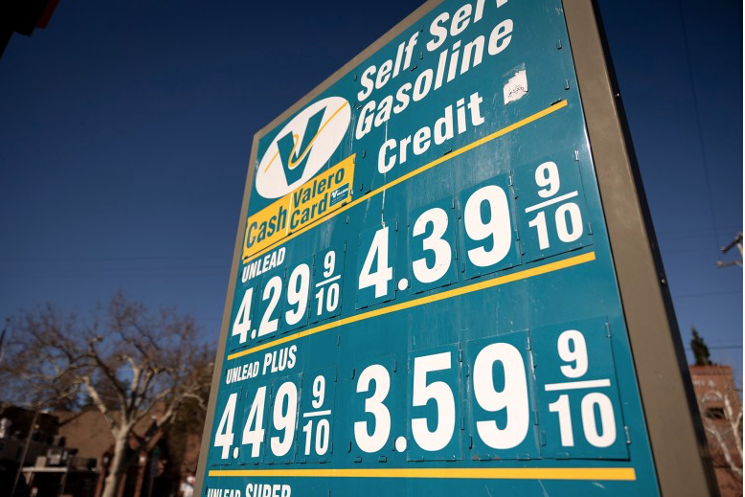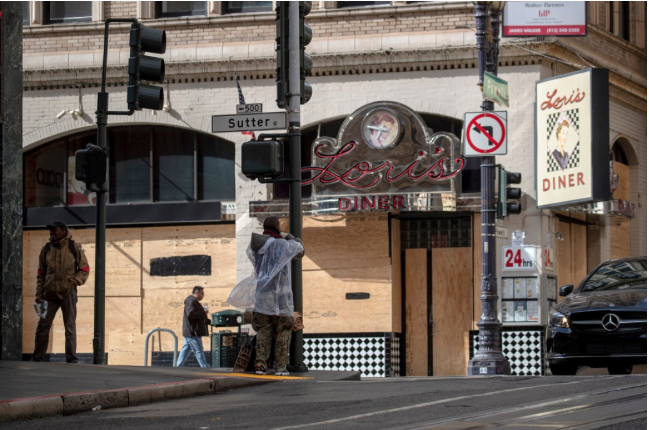CommentsPANDEMIC ANALYSIS - Recessions in California tend to widen the gap between rich and poor.
The sharp pandemic downturn of 2020 followed this pattern with low-income workers suffering the most. But unprecedented government relief kept millions from falling into poverty, and demand for labor boosted wages when businesses reopened.
Now with federal and state stimulus payments gone, and the recovery still underway, researchers are combing through employment statistics, as well as large-scale survey data, asking whether the pandemic resulted in a deepening of California’s divide. Three out of the last four recessions — excluding the bursting of the internet stock bubble — increased income inequality in California, the Public Policy Institute of California said.
In coming months the institute expects to have its own inequality measure updated with 2020 data. Many Californians already see economic inequality as a facet of life here, with 69% of residents believing the gap between the haves and have-nots is widening, a November poll by the PPIC found.
“The challenge is that the surveys had a difficult time sampling low-income individuals and households during the pandemic,” Sarah Bohn, a researcher who studies the issue for the PPIC, wrote in an email. “So even though the survey data is available, we are doing extra work to validate the income inequality statistics we typically would have in hand by now.”
‘Further exacerbating inequality’
There are other signs the 2020 recession may have deepened the economic divide, said Somjita Mitra, chief economist for the state Department of Finance. The largest contributor to 2020 state personal income was from government transfers, or essentially stimulus payments. And increases in revenue from high-income earners was enough to offset losses from low-income earners.
“High-income earners are doing exceptionally well, further exacerbating inequality in the state,” she said.
The answer to the inequality question may help shape Sacramento policymaking after a unique recession in which lockdowns resulted in huge job losses, economic stimulus checks buoyed worker paychecks, taxes on capital gains from surging stock market filled state coffers and the rise of remote work reshaped both the state housing market and its economy.
While federal aid may be expiring, Gov. Gavin Newsom said in Januarythat he planned to use the billions of unanticipated tax dollars to help struggling California families. Newsom said he has not ruled out measures such as state-funded stimulus checks like the ones that went to low- and middle-income families last year. Fellow Democrats who lead the Legislature are interested in another Golden State Stimulus, though they have doubts about Newsom’s proposed gas tax “holiday.” Newsom and legislators have already restored paid sick leave for COVID, though workers at smaller businesses are excluded.
Bottom of Form
In his spending plan, the Democratic governor presented several policies aimed at closing the economic divide, including universal healthcare that includes coverage for the state’s undocumented population, healthcare subsidies for the middle class, expanding paid family leave, establishing a tax credit for families with young children, universal no-cost meals at schools and more money to house the state’s homeless. The state last year also funded a guaranteed-income program, with a $35 million pool to support current or new pilot programs.
California has long struggled with poverty, exacerbated by some of the nation’s highest housing and gasoline costs, though there is evidence progress was notched during the pandemic thanks to government aid. The state had the highest rate of poverty at 15.4%, as measured by the Census Bureau’s supplemental poverty measure, which accounts for housing and transportation costs, as well as government spending and other factors.
Low-income jobs lost during pandemic
From a jobs perspective, low-wage workers bore the brunt of the pandemic recession, the shortest on record. And while low-wage workers are now in high demand, they still have the most ground to make up.
Mitra, of the state finance department, said that before the pandemic, the bulk of the jobs created paid about $20,000 a year, or less, resulting in people needing to work more than one job, or being underemployed. A study last year by the United Ways of California estimated 3.5 million California families didn’t make enough to meet basic needs.
“We were already really seeing a lot of inequality in this state,” she said. “When the pandemic hit, those jobs were the first ones to go.”
There are signs low-wage industries in the state are undergoing important changes. Low-wage jobs such as office administration, security and janitorial services have been slow to recover, likely pushing workers into other low-wage industries, according to an analysis last year by the California Policy Lab, a nonpartisan research center based at the University of California.
Low-wage workers in retail shops, hotels, restaurants, grocery stores and other such customer-facing establishments were hard hit by the pandemic. Meanwhile, the rise in home delivery has accelerated the rise of warehouse jobs, including at Amazon and other online retailers, in pockets of California’s Central Valley and Inland Empire. But there have not been enough of these jobs to make up for the losses, said Till von Wachter, an economics professor at UCLA.
“There are some sectors that have grown, such as transportation and warehousing, but they’re unlikely to have grown enough to absorb that big of a share,” von Wachter said. “They’re also not as ubiquitous as some of these other sectors; if you’re in San Bernardino, that’s a really important industry, but not, say, elsewhere in LA County.”
Inflation, housing hit poor the hardest
A spike in energy prices due to the Ukraine crisis is expected to harm the U.S. economy. Sharp rises in inflation tend to hit poorer residents the hardest, and there is some initial evidence that this is playing out in California.
About 2.6 million California households were participating in the state’s CalFresh program, which provides food benefits to individuals and families with low-incomes. That’s about the same level as the most recent peak in June 2020.

A Valero gas station in Sacramento on Feb. 22, 2022. Photo by Miguel Gutierrez Jr., CalMatters
“Even if people are working again, or more people are working, the cost of food is outpacing their incomes,” said Jacob Hibel, co-director of the Center for Poverty & Inequality Research at UC Davis. “Just having a job is not enough to guarantee that you have enough food to feed your family.”
And with housing prices skyrocketing last year, some people are now being cut out of a traditional route to the middle class, which is owning a home, experts said. Housing affordability, as measured by the number of Californians who could afford a median-priced, single-family home, hit 23% in the second quarter of 2021, according to the California Association of Realtors. That was the lowest point since prices were approaching their highs during the last bubble, in 2007, when 11% of Californians could own a home. That measure had risen slightly, to 25%, by the end of last year, according to the association.
High-income workers, homeowners and people who earn investment income have, on the whole, seen their wealth increase over the last nearly two years, experts noted, likely raising wealth inequality in California. Researchers noted in interviews that the pandemic may have increased inequality in other key ways. Disadvantaged children, for instance, fell further behind academically, widening the achievement gap.
“When you see those kinds of impacts, they can really lock in inequality,” said Hibel, of UC Davis. “It tends to take young people who are either in poverty – or who are experiencing inequalities – and just make it much, much less likely that they’ll be able to climb out of that social stratum when they reach adulthood.”
(Alejandro Lazo joined CalMatters from The Wall Street Journal, where he covered the West Coast for eight years. He previously wrote about housing and real estate for the Los Angeles Times and The Washington. Post. . He’s a native of Modesto who attended the University of San Francisco and the Columbia University Graduate School of Journalism.)






